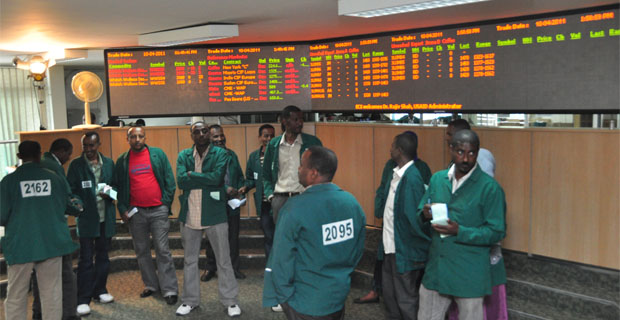US-Africa Summit An ‘Eye Opener’ For U.S. Business Community
.
By Dana Sanchez
![President Barack Obama and Africa leaders participate in the U.S.-Africa Leaders Summit at the U.S. Department of State in Washington, D.C., Aug. 6, 2014.<br />
Official White House Photo by Chuck Kennedy<br />
<a href=]() http://www.whitehouse.gov/photos-and-video/photogallery/us-africa-leaders-summit” width=”621″ height=”350″ />
http://www.whitehouse.gov/photos-and-video/photogallery/us-africa-leaders-summit” width=”621″ height=”350″ />
President Barack Obama and Africa leaders participate in the U.S.-Africa Leaders Summit at the U.S. Department of State in Washington, D.C., Aug. 6, 2014. Official White House Photo by Chuck Kennedy
.
Top African officials suffer from summit fatigue, but the recent U.S.-Africa Leaders Summit wasn’t like other summits dominated by politicians and bureaucrats, according to an editorial by William Wallace in FinancialTimes.
Thousands of Africans flew in and dozens of meetings were going on at any given time across Washington, D.C. on the sidelines of the main events. It was an eclectic carnival of players, Wallace writes.
For the U.S. business community this was an eye opener. You do not always have to know the president of a country these days to get things done. There is a dynamic array of other potential African partners, most of them in the private sector, and most of them, businessmen and women.
Donald Kaberuka, president of the African Development Bank, refuted the widely held belief that the U.S. is waking up to Africa’s commercial potential only because China is so far ahead. “It was not a political meeting,” he said. “It was not even a catch-up meeting. It was business people leading the way.”
Kaberuka said companies such as Coca-Cola, IBM, GE and JPMorgan have begun shifting their agendas on Africa towards a more healthy mix that places investment and trade higher on the agenda.
Others at the summit commended how Power Africa, an initiative launched by U.S. President Barack Obama in 2013 to bring U.S. expertise to bolster electricity generation, is targeting attention on a critical shortfall, according to Wallace.
Little reminder was needed of the flip side of the transformation the continent is undergoing such as the inadequacy of the public health response to Ebola. But, if the goal was to shift U.S. perceptions of Africa as simply a repository of disease, poverty and war — a place needing handouts, then the US-Africa summit made a healthy start, Wallace wrote.
American perceptions of Africa have long been swayed by the loudest U.S. constituencies with vested interest in the continent. More often than not, these have been non-governmental organisations — the human rights lobby — and faith-based groups. They played a central role for example in focusing U.S. attention on the plight of the Southern Sudanese during Sudan’s civil war.
The effect has been to distort the complex mix of realities in Africa’s 55 states – seen, as these have often been, through the lens of activists with a narrow agenda – and also to divert resources, Wallace wrote.
U.S. envoys to Africa admit to spending disproportionate amounts of time dealing with flashpoints such as South Sudan and the threat of terrorism coming from countries such as Somalia. They don’t spend much time on commercial opportunities that emerged as African economies have grown and a new class of business consumers.
For a few days in Washington, D.C. that changed.
The first U.S.-Africa summit, attended by nearly 50 African heads of state, took on issues from Islamic extremism to corruption but the dominant theme was Africa’s business potential and the role U.S. companies could play in creating jobs and in mobilizing the needed funds.
It may not quite qualify for what U.S. secretary of state John Kerry called a “pivotal moment in history.” That would be Aug. 4 1914, when the World War I began, not Aug. 4 2014, one delegate quipped.
But there was a shift away from Washington’s habitually paternalistic tone, heralding what Obama described as a “partnership of equals that focuses on African capacity to solve problems, and on Africa’s capacity to grow,” according to FinancialTimes.
http://afkinsider.com/69019/us-africa-summit-africa-shows-potential-drive-global-growth/
.
Unpacking Power Africa: A good opportunity for the private sector?
.
BY Kate Douglas
Efforts by the US to boost political and commercial ties with Africa came under the spotlight this month when President Barack Obama hosted some 50 African leaders for the first US-Africa Leaders Summit in Washington DC. Alongside a number of discussions around opportunities for better business partnerships between the two regions, the Summit generated about US$37bn in financing deals and investment in Africa.
![Peter Ballinger]()
At the heart of the US commitment for better engagement is Power Africa, a private sector-led initiative aimed at doubling electricity access in sub-Saharan Africa where an estimated 600m people lack access to reliable electricity. The initial set of Power Africa partner countries – Nigeria, Ethiopia, Ghana, Kenya, Liberia and Tanzania – are said to be paving the way for investment and growth through utility and energy sector reforms.
Obama announced the initiative last year (alongside a commitment of $7bn of US government resources) during a visit to the continent. The goal was initially to add over 10,000MW of power generation capacity to give an additional 20m households and businesses access to electricity. But at the Summit, Obama announced a tripling of the original target to 30,000MW and new connections for at least 60m. He also pledged a further $300m in grant assistance a year to expand Power Africa’s reach.
An additional $6bn in new private sector commitments was also revealed, bringing total private sector investment under Power Africa to over $20bn, with companies like General Electric (GE) and African investment company, Heirs Holdings, leading the way.
Alongside this are pledges in both technical and financial support by entities such as the World Bank, African Development Bank (AfDB), Overseas Private Investment Corporation (OPIC) and the Government of Sweden.
Power Africa is already involved in a number of energy projects, ranging from a loan guarantee for the Kiwira River Hydro Project in Tanzania to providing transactional and technical advice to move the proposed Corbetti Geothermal Power Plant project forward in Ethiopia. In northern Kenya, US government finance institution OPIC has approved up to $250m in financing under Power Africa to support the development, construction, and operation of the 310MW Lake Turkana Wind Power project.
Currently Power Africa has just over 40 private sector and financial partners, with roughly a third being African. However, according to Peter Ballinger, director of business development at OPIC, Power Africa projects are complex in nature and are not for anyone to just come in and invest.
“We are really looking to work and partner with companies that have experience, have done this before, and bring something to the table whether it’s a new technology, or additional capital, or some sort of wherewithal,” he told How we made it in Africa.
According to USAID, which houses the Power Africa website, the first step in becoming a Power Africa partner would be to express interest through the website. A Power Africa team member will then reach out to discuss how best an investor can get involved.
“If there appears to be a strong fit, your organisation may be invited to provide a letter of commitment expressing your support for Power Africa and setting forth the specific activities you intend to pursue in furtherance of Power Africa’s objectives,” states the website.
The thinking behind Power Africa
During the Summit, Obama reiterated the view that Africa needs sustainable development through trade, as opposed to aid, and that the US is looking to increase commercial ties as equal partners.
The US has been somewhat slow to engage with Africa’s growth story, falling behind China and the European Union as the continent’s largest trading partners. Within 15 years, trade between China and Africa has risen from just $10bn in 2000 to over $200bn in 2013, with China’s involvement in the continent extending to the construction of large infrastructure projects such as roads and ports.
At the Summit, Jeff Immelt, CEO of GE, summed up the sentiment that US companies “kind of gave Africa to the Europeans first and to the Chinese later, but today its wide open for us”.
Both sides set to benefit
According to Ballinger, the Power Africa initiative is a win-win for both the US and sub-Saharan Africa – the continent needs increased energy generation, while US companies have the opportunity to make good returns from these projects.
“US companies [bring] experience and technology and equipment to projects. So for companies like GE, yes, supporting Power Africa was a strategic business decision on their part,” noted Ballinger.
“So American companies I think will very much benefit from the groundwork that the US government has laid through Power Africa with our Power Africa countries.”
Role of public-private partnerships (PPPs)
Africa has a significant infrastructure deficit and the private sector can play an important role in closing this gap, as noted by Stuart Kufeni, CEO of the SADC Development Finance Resource Centre, which houses the Public-Private Partnership Network.
“Most of these infrastructure projects are huge and our governments can’t raise that kind of money in total, so they need the private sector’s participation in those projects. For instance, now from 2013 to 2017, we are looking at projects [in Southern Africa] in the region of US$65bn for infrastructure alone. There is no way our governments can raise that much,” Kufeni told How we made it in Africa last year.
In addition to financing, the private sector also has the expertise to develop these large projects.
At the Summit, Tony Elumelu, chairman of Heirs Holdings, said the private sector can play a key role in solving Africa’s power deficit. Nigeria recently took steps to privatise its power sector, and Elumelu said this allowed his company to acquire a major power asset last November, with a then output of 150MW of electricity. Just nine months later they had tripled this to 453MW.
“This is what the private sector can do,” noted Elumelu. “So learning from this… we [the private sector] have a role to play in helping to reform the power space.”
Balancing good returns with high risk
OPIC’s Ballinger said the Power Africa projects are good investment opportunities for the private sector, but they are not without risk.
“Many of these projects are highly risky, and so I think investors have an expectation of rate of return that they need, certainly they also have to service the debt, long-term debt, through organisations like OPIC. And then they have got to deliver on their contract to the off-taker which in almost every case is a government entity like… TANESCO in Tanzania or KenGen in Kenya.”
The complexity of PPP deals means there can be challenges, such as meeting tight government deadlines to conclude contractual and financing agreements.
“So governments have to understand that when you are putting together a very complex public-private partnership, that giving them six months to reach financial closure… sometimes it’s too tight for international financial institutions to commit, especially on these larger energy projects, which are very complex in nature.”
http://www.howwemadeitinafrica.com/unpacking-power-africa-a-good-opportunity-for-the-private-sector/42451/
.
Some 8,000 MW power generating projects under well way
.
![Some 8,000 MW power generating projects under well way]()
Construction of the hydropower dams with an aggregate capacity of generating 8,000mw power is well in rogress, the Ministry of Water, Irrigation and Energy said.
The Minister Alemayehu Tegenu told ENA that construction of hydropower dams is being undertaken to realize the target set in the five year pan, which is increase hydropower generating capacity to 10,000mw from the current 2,268mw.
Gilgel Gibe III, is one of the preojects being undertaken. Some 86 percent of the construction of the dam has so far completed. Up on completion, the dam will generate 1870mw power.
Other projects that are being constructed in various parts of the country are also well in progress, he added.
Despite its huge potential for hydropower, 45,000mw, Ethiopia has developed and use only 2,268mw power, Alemayehu stated.
Alongside constructing new hydropower dams, expansion of existing dams such Tekeze and Gelgel Gibe II are being carried out.
The dams being built in various parts of the country will help to increase citizens access to electricity and wearn additional revenue from its sale.
The master plan has been also prepared which enabling to the country brings the solution to generate the power and empower the wise utilization of abundant resource in the country, he mentioned.
The ministry has been working in order to accelerate energy development to meet the domestic electric power need and export to the neighbor countries, he indicated.
Beyond the political and economical benefits, Ethiopian energy development effort helps to create East African power pool Integration.
Recently, the construction of over 1,000 km Ethio-Kenya electric power lines have been finalized and expected to generate close to 2,000 MW, he added.
Ethiopia has also signed a memorandum of understanding with South Sudan and Yemen to export electric power.
.
KIG to Produce Ethiopia’s First Cranes Soon
.
The five months old crane manufacturing company, KIG, is set to begin production in a month time after receiving machinery and inputs.
KIG has already installed eight production cranes at its production plant that lies on 6,000 square meters. The installed production cranes each have a 20 tones capacity. Yet, according to KG’s managing director, Kahsay Gebregziabher, production has been stalled because of delivery delay in sheet metals and other machineries KIG has ordered.
Kahsay noted, three months ago his company ordered five containers from Germany and Italy. The freights each had 25 tons of sheet metals bought for U.S $ 600 per ton and were expected to be delivered in a month time. However, it was only three of them that arrived at the
Modjo Dry Port, according to the managing director.
Production started two months ago, as per the plan. The company has also ordered production machinery, which it still has not taken delivery of.
In addition to these, according to Kahsay, KIG has a 23 Million Birr order from the Metal and Engineering Corporation (MeTEC) for 10 cranes.
According to Fortune KIG was established with a capital of 300 Million Birr by KG Engineering and Lucernini, an Italian company. The cranes it plans to produce has a capacity ranging from 10 tons to 50 tons and are going to be sold from three Million Birr to 22 Million Birr, respectively.
According to Kahsay, his company is the second of its kind in Africa and has the potential of exporting its products to other African nations.
The production capacity of KIG initially will be five cranes a month.
.
Ethiopians in Canada contributing to national development
.
![]()
Ethiopian Diasporas residing in Canada are contributing to the development of the country, Ethiopian Ambassador to Canada, Birtukan Ayano has said.
The Diaspora has contributed close to 456,930 USD for the construction of the Grand Ethiopian Dam (GERD) being built over River Nile, last Ethiopian fiscal year alone.
According to the Ambassador, they have also pledged to provide 46,000 USD.
Activities are being undertaken to further mobilize the Diaspora in a bid to increase their contributions to the country’s development.
The Canada- Africa Business Summit to be held in September 2014 will be a good opportunity for Ethiopia to introduce the investment opportunities, she added.
High level officials from the Ethiopian Ministry of Foreign Affairs will promote investment opportunities at the Summit.
Canadian companies including Alana Potash are engaged in Ethiopia in mines exploration and development. Nine Canadian companies conducted assessment in Ethiopia last fiscal year.
Discussions have already started between Ethiopia and Canada to sign investment protection agreement, the Ambassador said.
Trade relation between the two countries is low with an annual 141.3 million Canadian dollars.
http://www.waltainfo.com/index.php/explore/14619-ethiopians-in-canada-contributing-to-national-development-
.
KENYA-ETHIOPIA 400MW POWER PROJECT TAKES OFF
.
A 686Km high-voltage line to bring 400MW of power purchased from Ethiopia into the Kenyan national grid is set to take off with the signing today of the funding deal with the International Development Agency (IDA), the concessionary-lending arm of the World Bank Group.
The Sh54billion transmission line is part a regional strategy to pool power that will gradually include Uganda and then Tanzania.
The power will come from the controversial Gibe III dam in Ethiopia whose construction has not been without hitches as pressure-groups raised the spectre of adverse downstream effects of damming a river that feeds into Lake Turkana.
Ethiopia is estimated to have 45,000MW of power and first sought guarantee from Kenya that it would take up the power if the nation undertook to put up the HEP dam.
The African Development Bank has already given Sh30billion toward the project while the French Development Bank (ADB) through its infrastructure-arm Proparco and the Government of Kenya will also partially fund the project whose total cost is put at Sh94billion.
Two High-Voltage Direct Current converters will be put up at Suswa in Kenya and Wolayita Sodo in Ethiopia.
The project will be implemented by the Kenya Electricity Transmission Company (Ketraco) and the Ehtiopia Electric Power Corporation (EEPCO).
Kenya will buy the power at 5 US cents per Kilowatt Hour which is much lower than most power producers sell their power to monopoly distributor Kenya Power. Lake Turkana Wind Project for example, proposes to sell power to Kenya Power at 7 US cent/Kwh.
The power will transmit at 600Kilovolts much higher than the beefed up 400Kv line being built from Mombasa to Nairobi to bring power from the likes of Rabai Power station, Kipevu III and the proposed 600MW coal-fired plant in Kilifi.
Indeed, Ketraco is embarking on a stabilization project of the national grid so that it can handle these high voltages.
The power will come in direct current form which is much cheaper to transmit over long distances and sees lower dissipation rates (wastage).
Two high-voltage DC converters will be built at Suswa and Sodo. The Sodo one will convert generating alternating current into direct current for transmission and at Suswa the DC will be converted to AC and injected into the national grid.
The route from Ethiopia, according to project documents will be:from Ethiopia into Kenya approximately 90 km West of Moyale town and traverses Marsabit, Samburu, Isiolo, Laikipia, Nyandarua and Nakuru. From Moyale the transmission line route runs adjacent to the Great North Highway (Marsabit – Moyale) in a southerly direction avoiding Marsabit National Park. From Marsabit area the route runs southwards at a maximum distance of 500 m parallel to the main Isiolo – Marsabit Highway to Laisamis.
At Laisamis Town the proposed RoW runs close to the road as it enters Losai game reserve keeping a range of about 400 m to 800 m off the road reserve then runs further on to Merille where it diverts slightly westwards running east of Matthews Range, 6 km east of the Lololokwe Mountain peak. It then runs through a stretch of fairly flat land covered by thorny shrubs and bushes, and then turns southwards to the Ngoborbit plateaus and ridges dropping altitude down into Laikipia.
In Laikipia, the proposed RoW continues through the extreme western section of Mpala Ranch which is covered by scattered thickets and bushes. Then it crosses Mutara Riverinto Ndaragwa. The line runs on top ridge of Shamata and then sharply drops altitude to the flat plains of Olobolossat, 3.7 kilometres eastwards of Lake Ol Bolossat. It then traverses the Olkalou Settlement Scheme and cuts across Malewa River, climbing a steep hill then drops altitude to the flat land of Marangishu (karati) and on-wards to Kijabe after crossing the Nakuru – Nairobi highways into plains east of Mt. Longonot into the proposed Suswa Substation.
.
.
Recent Visits of President, Prime Minister to USA Described as Fruitful
.
![Recent Visits of President, Prime Minister to USA Described as Fruitful]()
Government Communication Affairs Office announced that the recent visits of President Mulatu Teshome and Prime Minister Hailemariam Desalegn to the United States were successful.
In a press briefing Communication Minister Redwan Hussein gave on August 15, 2014 said the Ethio-US investment forums held in Houston and Los Angles in the presence of President Mulatu Teshome have aroused the interest of big US corporates in doing business in Ethiopia.
The US-based energy company Chevron has, instance, expressed interest in carrying out oil exploration in Ethiopia; and the cut-flower company, KKR , has requested additional 200 hectares of land to expand business, according to the minister.
Other US companies are also reportedly keen to invest in hotel, resort, tourism and the services sector in general, he added.
He stated that the forums were effective in selling the idea that Ethiopia is a country where one can undertake business and get profit.
Redwan further indicated that the forums also paved way for local producers to access US markets and facilitated the collaboration of companies of the two countries in working together in export products.
He also stated in the forum held in Los Angeles the Ethiopian diaspora had a chance to know more about their country’s ongoing development. The minister said in the forum many young Ethiopian diaspora expressed their desire to take part in the development endeavours underway in the country.
In the U. S-Africa Leaders Summit, which was held in from August 4-6, 2014 in Washington DC, Ethiopia’s rapid economic development and its resilient green economy were among the key concerns of the summit that acknowledged Ethiopia and identified it as the most successful country in natural conservation, and in small-scale farming development that brings changes in the lives of low-earners, Redwan elaborated.
Due to the above factors, President Obama invited the Ethiopian Prime Minster to share his country’s experience for the summit, the minister disclosed.
According to him, Ethiopia was also identified as exemplary country for the summit’s another agenda of “invest in health” and it was selected to co-chair the meeting with the US.
He further stated the summit also appreciated Ethiopia’s efforts to ensure lasting peace in the continent and is among the six African countries engaged in active deployment of peacekeeping forces.
http://213.55.98.22/enae/index.php?option=com_k2&view=item&id=2134:recent-visits-of-president-prime-minister-to-usa-described-as-fruitful&Itemid=260
.
Tsehay to Start Sales in October
.
The Chinese real estate company, Tsehay Real Estate Plc, is going to start selling units in the coming October on one of the buildings it is 70 percent complete.
On Thursday, August 14, 2014 the company invited what it called potential buyers, to visit its site around CMC area after announcing it has thus far spent 600 Million Birr on it 12 storey project. According to Deputy General of Tsehay, Yijung Wang, these building that are at different stage of completion will be available for sale when they reach 70 percent completion.
The buildings Tsehay is constructing have multiple types of units. They range from two bed rooms with 140 square meters to five bedroom penthouses of 275 square meters. All of its building will have 646 units out of which 300 of them will have two bedrooms and one guest
room of 144 square meters. They will also have access to parking area for only one car and additional parking place for an extra cost. In addition to this, ground level units will have gardens and units starting from the first floor will have terraces.
According to Wang, all buildings will be completed by April 2016 but residents will have access to their units as every building’s construction is completed.
Tenadam Zewse, Senior Advisor to Tsehay, commented buyers will have to make a 70 percent down payment for the unit they wish to acquire. He added the prices begin at U.S $ 1,100 per square meter and increase as the units get higher on the buildings. This is, according to
Tenadam, because units on top of the building will have better quality and view.
The real estate company is going to start erecting four more building by the coming October, Wang noted. These buildings are going to be for commercial purposes and will be built on 10,000 square meters.
Tsehay Real Estate Plc was established in 2012 by China Geology Corporation Overseas Construction Group (CGCOC) and Red Fox International Business Company.
.
Turkish investors top list for quality
.
![Getahun Negash]()
Getahun Negash
.
The newly restructured Ethiopian Investment Commission announced that Turkish Foreign Direct Investment (FDI) to Ethiopia is leading the group of emerging economies that have shown interest in investment opportunities in Ethiopia.
Although the Chinese lead in terms of number of companies that have invested in the country, the Turks lead others in combined capital outlay, the commission said.
Thus far, some 2,010 investors have joined the Ethiopian market with a total capital investment of 89 billion birr; however, the combined capital investment by the Turks is just shy of 20 billion birr, constituting 22.5 percent of the overall outlay. The Chinese, who have 367 companies already invested in the country, are second to the Turks in capital expenditure. The explanation of the commission states that Turkish companies are number one in the quality of the investment on account of having the highest share of overall capital investments by FDI in Ethiopia. Experts, on the other hand, argue that the nature of the industries these companies went into should have been considered when talking about quality of investment.
Still, the conclusion of the commission about the quality of the FDI can be observed easily since most of the Turkish companies like Ayka Addis, Saygin Dima Plc., BM Cables and MNS Textile are those in the manufacturing that have already started operations and have entered the export market.
In connection to that, the commission is undertaking measures to cancel investment licenses of companies who are taking a long time to start operations and those keeping investment lands idle without developing them. During a press conference held at the offices of the commission, it was announced that so far it has canceled licenses of over 2,980 investors who were identified as inactive and are keeping their land without the intended development.
Director of public relations at the commission, Getahun Negash, told The Reporter that the government has given priority to the improving internal service delivery in order to attract more high quality investments.
He also revealed that government has identified the major problems that hindered the progress of investment including its setbacks such as challenges related to provision of investment land. He added that major steps are in place to solve the setbacks such as developing the industrial zones with the cooperation of both the federal and regional governments.
He also made it clear that poor coordination among government institutions is one of the longstanding problems and that it is now able to address the problem by providing a one-stop service to ease the bureaucratic red-tape to acquire investment services.
According to Getahun, an investor has the responsibility to develop or go operational within two years of the land being granted.
“For the time being, we are taking action against those who keep their land fenced without developments. Next we extend our actions on those who developed the land but have not gone operational,” Getahun told The Reporter.
Based on the commission, it has been identifying those license holders since 2011 and, out of 3,069 who took investment licenses, 2,980 projects have been canceled for the stated reason, according to Getahun.
In addition, he said that decision has already been made to attract high quality investments with minimum investment capital. To filter in quality, FDI the commission is planning to raise the minimum initial capital to USD 200,000.
http://www.thereporterethiopia.com/index.php/news-headlines/item/2384-turkish-investors-top-list-for-quality
.
DOW Chemical Co. to open office in Addis Ababa
.
![Ross Mclean]()
Ross McLean
.
One of the leading chemical giants in the world, DOW Chemical Co. on Tuesday announced that it is going to open a country office in Addis Ababa.
During a press conference held at the Radisson Blu Hotel, which is located off Joseph Tito Street, representatives of DOW Chemical told local reporters that the company has been providing innovative solutions to the agriculture and industry sectors. They said that they have seen a huge market potential in Ethiopia.
DOW Chemical has been supplying chemicals to Ethiopia through its local agent, Chemtex. With the view of expanding its market and serve customers more effectively, the company has decided to open a country office in Ethiopia. The company has finalized the paperwork and is in the process to open office in Addis Ababa.
Ross Mclean, president for sub-Saharan Africa, said that his company wants to supply innovative agricultural and industrial chemicals to Ethiopia. In addition to that, Maclean said Ethiopia has been registering a double-digit economic growth in the past ten years. “This is a remarkable economic growth and the country is implementing the agricultural-led industrialization policy. That is why we decided to open an office in Ethiopia,” Maclean told reporters.
According to Maclean, DOW Chemical Co. hopes to serve the Ethiopian agricultural development effort by supplying the right agricultural inputs. He revealed that his company is working with the Ethiopian Agricultural Transformation Agency (ATA) and other stakeholders. The company also supplies industrial inputs for footwear, cosmetics, paint, foam, and leather factories. It also manufactures and supplies water treatment chemicals.
Maclean said that his company is working hard to satisfy the demands of Ethiopian teff farmers. “Teff is not only a major food cereal but it is also an export crop. It could be a major foreign currency earner in the future.” The company is in the process to supply a pesticide called Pallas that enable farmers to contain grass weds that stifle teff.
A delegation from Dow Chemical Co. comprising ten senior executives met Prime Minister Hailemariam Desalegn and President Mulatu Teshome (Ph.D.) and discussed the company’s planned works in Ethiopia. Prime Minister Hailemariam advised the delegation to implement a sustainable work program in the country and collaborate with the government.
Currently headed by Andrew Liveris and headquartered in Midland Michigan, DOW Chemical Co. was established in 1897. It has 54,000 employees working in 40 countries. The country channels its product to 160 countries generating annual revenue of 57 billion dollars. As of 2007, it has been the second-largest chemical manufacturer in the world by revenue after BASF and as of February 2009, the third-largest chemical company in the world by market capitalization after BASF and DuPont.
The company has been active in Africa since in 1959 when it first opened a regional office in South Africa. It opened offices in Nairobi four years ago and in Accra two years ago. It is in the process to open an office in Nigeria this year.
http://www.thereporterethiopia.com/index.php/news-headlines/item/2383-dow-chemical-co-to-open-office-in-addis-ababa
.
Electric Services installs transformers to reduce power cuts
.
Alemyehu Tegenu, Minister of Water Irrigation and Energy
.
In a bid to curb the recurrent power cuts, the Ethiopian Electric Services has installed 248 transformers in Addis Ababa and the regional states.
The new transformers are believed to augment the existing old transformers which can hardly cope with the ever- increasing power load. In an exclusive interview with The Reporter, Alemyehu Tegenu, Minister of Water, Irrigation and Energy, said that there was no shortage of electric power in the country. Alemayehu said the cause for the power cuts is related to the old power distribution lines. According to him, the power distribution network and the electric transformers are over-loaded.
Alemayehu said the power consumption trend in the country is changing. “Previously residents of Addis Ababa used biomass fuel. Now people use electric power to cook. The rapid investment activity needs more energy. The existing power generation capacity is adequate to accommodate the existing demand. However, the aging distribution system is unable to handle the ever-increasing power demand,” Alemayehu said.
Electric transformers in Addis Ababa are exploding in every nook and corner. Residents of Addis Ababa question the quality of the transformers. However, Alemyaheu said that the problem got nothing to do with the quality of transformers. “All the transformers are tested before they are installed. The problem is that there is a high power demand that the transformers at times are unable to accommodate. The power load is too high for them.”
According to the minister, to mitigate the power cuts the Ethiopian Electric Services has installed 248 supportive transformers all over the country. A Chinese power company, China Hydro, hired by the Ethiopian Electric Services has installed 170 of the supportive transformers. “We have noted some improvements and we will install more supportive transformers based on the need assessment we undertake.”
Alemayehu said the old transmission lines are being replaced with the new ones, adding that hundreds of new substations are being installed. “We have built new substations in Sebeta, Sululta and Akakai towns,” he added.
The country now has an installed generation capacity of 2,268 MW from hydro, wind, geothermal and thermal energy. The electric power demand is increasing at a rate of 32 percent every year. Every year more than 700 MW of new power demand is created due to the flourishing manufacturing sector. According to the minister, the current demand for electric power is more than 2000 MW.
The Ethiopian government is currently building power plants with a total installed generation capacity of 8450 MW. The Grand Ethiopian Renaissance Dam (6000 MW), the Gilgel Gibe III (1870 MW), Genale Dawa (254 MW), Adama II wind power project (153 MW) and the 70 MW geothermal power development project in the rift valley are the ongoing power projects that will rescue the country from power crisis.
http://www.thereporterethiopia.com/index.php/news-headlines/item/2386-electric-services-installs-transformers-to-reduce-power-cuts
.
Ethiopia and Japan Held 14th Round Industrial Development Policy Dialogue
.
Japan and Ethiopia held a five days dialogue that lasted from August 11 to 15 on Industrial Development. The dialogue was held in Addis Ababa and it was the 14th Round of Policy Dialogue on Industrial Development.
According to Walta Information Center this Dialogue was referred to in the Joint Communiqué by Prime Minister Mr. Shinzo Abe and Prime Minister Hailemariam Dessalegn issued on the occasion of the state visit of Japan’s Prime Minister to Ethiopia in January.
The Dialogue has been held since 2000 when the late Prime Minister Meles Zenawi Professor Kenichi Ohno and Professor Izumi Ohno from the National Graduate Institute for Policy Studies requested for it.
The Dialogue has been conducted as part of a technical assistance project by the Japan International Cooperation Agency (JICA). This infers it has been coordinated closely with the “Kaizen” initiative that the Ethiopian Government is implementing across the country with
assistance of Japan. This is also the platform that created the “Champion Products approach,” which is a tool for promoting trade and increasing exports.
The Dialogue attracted many high level officials and was headed by Newayekiristos Gebreab, Economic Advisor to the Prime Minister.
Topics such as the positioning of “Kaizen” in the next GTP2, a direction of scaling up industrial capacity to achieve industrial development and a light manufacturing vision were discussed. In addition to this points Ethiopia should note were also raised.
Other than these, the dialogue also covered topics such as the situation of the “Latest Comer” countries, namely Myanmar, Cambodia and Bangladesh, was was introduced and an active exchange of views and discussions were conducted on policies to encourage more FDI based on other countries’ experiences or the necessity to implement industrial policy step by step.
http://www.2merkato.com/news/alerts/3200-ethiopia-and-japan-held-14th-round-industrial-development-policy-dialogue
.
Acacia seeds as a source of protein
.
By Johanna Rendle-Short
![Acacia seeds as a source of protein]()
.
I listened with interest to a recent ABC (Australia Broadcasting Corporation) radio program talk about how Australia’s wattle, the acacia tree, could be used as a source of protein in Ethiopia.
The program was part of Radio National’s First Bite, recorded on August 2 and titled ‘Could Australia’s floral emblem hold answers for a hungry world.’
The radio discussion was about how acacia trees can be used as a food source. Seeds that grow on the acacia trees are edible. The seeds are found in large pods that hang vertically out of the tree. When they are ripe, the pods burst open and the seeds fall out. The seeds can be roasted, ground and added to flour when making bread.
The acacia tree is a native tree in Ethiopia. There are about 150 African species and over 900 Australian species of acacia worldwide. The Australian acacia, called the wattle, is the national floral emblem for Australia.
Australian acacia trees were brought to Ethiopia about 20 to 30 years ago in order to increase soil nutrients and combat soil erosion. Currently, there are several million acacia trees growing in northern Ethiopia. One of these Australian acacia trees growing in the north of Ethiopia, in the Tigray Regional State, is called the Acacia Saligna.
The acacia tree is very useful. This is why Australian varieties were planted here in Ethiopia so many years ago. The tree can be used as firewood, as a windbreaker, to improve the soil, to make furniture and poles. The acacia tree is very hardy and can grow in desert like conditions.
It was very exciting to hear of the links between Australia and Ethiopia on the radio. Peter Yates, an anthropologist and advisor to World Vision Australia, was talking about how the acacia trees growing in Ethiopia could be used for more than just firewood and soil erosion prevention. The acacia seeds could be harvested and used as food.
Acacia Saligna seeds are rich in protein and starch. It is estimated that they have about 18 per cent ‘usable protein.’ In other words, the seeds are an excellent source of amino acids that can be digested by the body. The seeds are also fairly rich in starch and so they are a good source of energy. What is important is that this source of protein is already growing in the north of Ethiopia.
The seeds are similar to lentils or beans. In this sense they are different to cereals such as wheat or teff that tend to be low in lysine, an essential amino acid. In contrast, acacia seeds, like other beans and lentils, are high in lysine.
Lysine, or L-lysine, is necessary for human health but the body can’t manufacture it by itself. You have to get lysine from food or supplements. Lysine is an amino acid, one of the building blocks of protein. So lysine is important for growth. Lysine helps the body absorb calcium, and it plays an important role in the formation of collagen, a substance important for bones and connective tissues including skin, tendon, and cartilage.
Lysine is found in foods that are rich in protein. A major source of protein is meat (specifically red meat, pork, and poultry), cheese, some fish (such as cod and sardines), nuts, eggs, soybeans (particularly tofu), beans and legumes.
This means that a poor diet that mainly relies on cereals, such as wheat or teff, for its source of energy and protein may be low in this essential amino acid called lysine. Teff, the tiny grain from which injera is made, is richer in calcium, iron, copper and zinc than other cereal grains, but its lysine content is still low.
So some people may not be getting enough protein in their diet.
But if you mix legumes and cereals you can increase the availability of the protein and the overall quality of the protein. Yates said that if you add acacia seeds to cereals such as wheat or teff, the nutritional value of the flour or bread will be increased.
“The real promise of acacia is that it puts better nutrition for children into the hands of parents,”said Yates in a paper presented at the ‘Wattle We Eat for Dinner’ Workshop on Australian Acacias for Food Security, held in Alice Springs, Australia, August 16–18, 2011.
This means that by just adding some acacia seeds, you can increase the amount of protein in the diet.
Because acacia trees are already growing in the northern part of Ethiopia, it would be quite simple to collect the seeds from the trees. You just need to hit the tree with a stick when the pods are ripe and the seeds fall out onto the ground beneath.
Some people are concerned about the level of cyanide in acacia seeds. The Australian species, including Acacia Saligna, have very little cyanide (less than a third the amount allowed by the World Health Organisation), whereas the African species have high levels of cyanide. It is for this reason that Africans have tended not to consider acacia seeds as a food source.
Once the seeds have been gathered, they can be lightly roasted, ground and then mixed with cereals.
The idea for using acacia seeds as a food source came from the Australian Aborigines. Indigenous Australians have been eating wattle seeds or acacia seeds as part of their traditional diet, for millennia. Bush food or ‘bush tucker’ traditionally refers to any food native to Australia that is used as sustenance. Australian Aborigines have been eating native animal and plant foods for an estimated 60,000 years of human habitation on the Australian continent. They collect or gather the bush tucker and then use traditional methods to process, roast, bake and cook the food. Seeds, nuts and corns are used to make flour so that they can make bread.
Wattle or acacia seeds are now being used in non-traditional Australian food as well. A favourite of mine is wattle seed ice-cream. You can either collect the seed in the traditional way or buy it already ground and roasted. It is dark brown in colour and has a chocolate flavour with a lingering taste of coffee and hazelnut. I like the way it gives a rich nutty taste to the ice-cream. But you can also add wattle seed to biscuits, pancakes, smoothies. They are delicious as well.
Being able to use this seed in breads and other cereals here in Ethiopia may make a significant difference to the quality of the diet in areas where nutrition is poor. The seed is easy to harvest and the trees are already growing in the northern part of Ethiopia. Plus acacia seeds taste good.
http://www.thereporterethiopia.com/index.php/living-and-the-arts/lifestyle/item/2365-acacia-seeds-as-a-source-of-protein
.
Belgian Ambassador Calls For Consolidated Economic Relation
.
![Belgian Ambassador Calls For Consolidated Economic Relation]() Ethiopia and Belgium should strengthen their economic relation by using the strong diplomatic tie they have developed, Belgium’s Ambassador to Ethiopia said.
Ethiopia and Belgium should strengthen their economic relation by using the strong diplomatic tie they have developed, Belgium’s Ambassador to Ethiopia said.
In an exclusive interview with ENA, Ambassador Hugues Chantry said though the countries have long-standing diplomatic relation, their economic tie is weak.
Belgium imports coffee and horticultural products from Ethiopia, while Ethiopia imports agricultural chemicals and machinery, he said, adding that the trade exchange is still way below the desired level.
The ambassador said his country is committed to using the strong diplomatic relation that exists between the two countries as a leverage for creating better trade and investment ties.
Belgian businesspersons who invested in Ethiopia are few and the capital flow of those engaged in textiles and flowers is not more than 20 million Euros, he added.
Efforts are being exerted to encourage businesspersons to engage in various investment sectors in Ethiopia, according to the ambassador.
The Ethiopia Embassy in Brussels has for instance been promoting the wide investment opportunities in Ethiopia, in collaboration with Belgium Chamber of Commerce, he elaborated.
Subsequently, Belgian investors have carried out feasibility studies in areas of green development, water development and civil engineering, and some have shown interest to invest in Ethiopia, Ambassador Chantry added.
The fast growing Ethiopian economy has the potential to attract many investors, he stressed, adding that he has therefore been encouraging Belgian investors to benefit from the low labour cost, natural resources, peace and security in the country.
On other hand, the ambassador appreciated the role Ethiopia has been playing in bringing peace and stability in the Horn of Africa.
He said his country would provide all the necessary support for Ethiopia’s effort through the European Union.
Ethiopia and Belgium established political and diplomatic relations in 1906.
http://213.55.98.22/enae/index.php?option=com_k2&view=item&id=2104:belgian-ambassador-calls-for-consolidated-economic-relation&Itemid=219
.
Filed under: Ag Related, Economy, Infrastructure Developments, News Round-up Tagged: Addis Ababa, Africa, Agriculture, Allana Potash, Business, East Africa, Economic growth, Ethiopia, Investment, Millennium Development Goals, Sub-Saharan Africa, tag1, United States ![]()
![]()







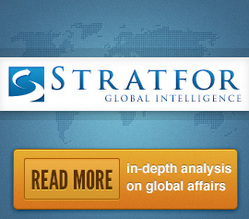
 Ambasssador Saleh Sahabun, Arab League Ambassador to Ethiopia and the African Union, disclosed that the organization is striving to encourage Arab countries to strengthen ties with Ethiopia.
Ambasssador Saleh Sahabun, Arab League Ambassador to Ethiopia and the African Union, disclosed that the organization is striving to encourage Arab countries to strengthen ties with Ethiopia.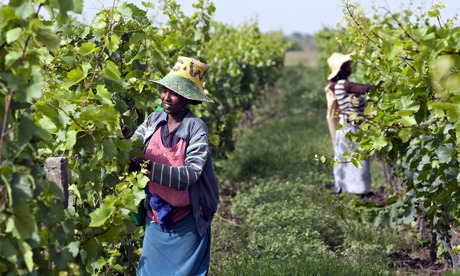
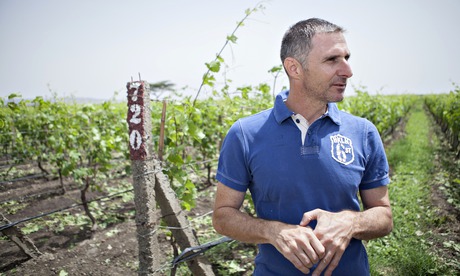
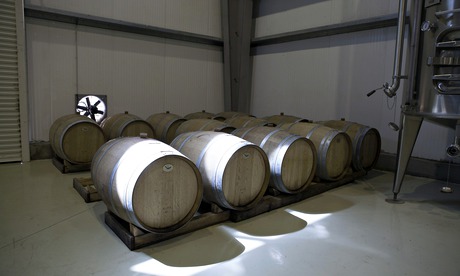
 There has been no recent Federal Aviation Authority (FAA) warning for flights in or out of Ethiopia, according to US Embassy in Ethiopia.
There has been no recent Federal Aviation Authority (FAA) warning for flights in or out of Ethiopia, according to US Embassy in Ethiopia.
 Rising exports have contributed to Ethiopia’s double digit economic growth over the past decade, but the recent drop in prices has exposed underlying vulnerabilities in the country’s export structure, the World Bank said in a report on Wednesday.
Rising exports have contributed to Ethiopia’s double digit economic growth over the past decade, but the recent drop in prices has exposed underlying vulnerabilities in the country’s export structure, the World Bank said in a report on Wednesday. State Minister for Foreign Affairs, Dewano Kedir, held discussions with representatives of the Middle East Development LLC (MED LLC), on Tuesday.
State Minister for Foreign Affairs, Dewano Kedir, held discussions with representatives of the Middle East Development LLC (MED LLC), on Tuesday.
.png)
.png)




 ZTE is one of the two Chinese companies who signed the 1.6 billion dollar Ethio Telecom second expansion project signed last year. ZTE entered the telecom market of Ethiopia in 1996 and officially set up its Ethiopian Office in 2000. The company involved in some small projects between 2003 and 2005 but a substantial deal had not been made until 2006. In 2006 the company entered into a three-year sole supplier framework agreement with Ethio Telecom(the world’s only project in which a national telecom network is built by a sole equipment supplier) financed on seller credit. Unlike the current expansion project which has a greater scope and estimated to cost 1.6 billion dollar, the first expansion project involved 1.9 billion USD of investment by Ethio Telecom—1.5 billion USD for equipment and 0.4 billion USD for engineering construction. The implementation started in 2007 and was marred with many problems and had not received acceptance by Ethio telecom until recently. On the second phase of the expansion project Ethio telecom went for a multi-vendor strategy and selected Huawei in addition to ZTE giving each 50% of the project.
ZTE is one of the two Chinese companies who signed the 1.6 billion dollar Ethio Telecom second expansion project signed last year. ZTE entered the telecom market of Ethiopia in 1996 and officially set up its Ethiopian Office in 2000. The company involved in some small projects between 2003 and 2005 but a substantial deal had not been made until 2006. In 2006 the company entered into a three-year sole supplier framework agreement with Ethio Telecom(the world’s only project in which a national telecom network is built by a sole equipment supplier) financed on seller credit. Unlike the current expansion project which has a greater scope and estimated to cost 1.6 billion dollar, the first expansion project involved 1.9 billion USD of investment by Ethio Telecom—1.5 billion USD for equipment and 0.4 billion USD for engineering construction. The implementation started in 2007 and was marred with many problems and had not received acceptance by Ethio telecom until recently. On the second phase of the expansion project Ethio telecom went for a multi-vendor strategy and selected Huawei in addition to ZTE giving each 50% of the project.







 The Tendaho Dam built to irrigate sugar cane plantation for Tendaho Sugar Factory can now fully supply the water required, according to Water Works Design and Control Enterprise.
The Tendaho Dam built to irrigate sugar cane plantation for Tendaho Sugar Factory can now fully supply the water required, according to Water Works Design and Control Enterprise.

 An Egyptian intensive care unit for cardiac surgery was inaugurated Saturday at Black Lion Hospital in the Ethiopian capital of Addis Ababa, Egypt’s Ministry of Foreign Affairs said in a Saturday statement.
An Egyptian intensive care unit for cardiac surgery was inaugurated Saturday at Black Lion Hospital in the Ethiopian capital of Addis Ababa, Egypt’s Ministry of Foreign Affairs said in a Saturday statement.
 As a researcher in literacy, gender and development, I was excited to have the opportunity to collaborate on a
As a researcher in literacy, gender and development, I was excited to have the opportunity to collaborate on a 



 The United Kingdom extended on Friday, August 1, 2014 a grant amounting to £17 million to address constraints related to tax, audit and transparency both at federal and regional levels.
The United Kingdom extended on Friday, August 1, 2014 a grant amounting to £17 million to address constraints related to tax, audit and transparency both at federal and regional levels.
 The close to thirty percent youth of the total population of Ethiopia play substantial role in the development of the country, the National Planning Commission of Ethiopia (NPC) said.
The close to thirty percent youth of the total population of Ethiopia play substantial role in the development of the country, the National Planning Commission of Ethiopia (NPC) said. Utmost efforts are underway to reap about 4 million quintals of agricultural output in Gambella Regional State in 2006/7 crop season, according to the regional state agricultural development bureau.
Utmost efforts are underway to reap about 4 million quintals of agricultural output in Gambella Regional State in 2006/7 crop season, according to the regional state agricultural development bureau. A forum that can open a new chapter in Ethio-American business and African-American business relationship in general is underway in the US, according to the Ministry of Foreign Affairs (MoFA).
A forum that can open a new chapter in Ethio-American business and African-American business relationship in general is underway in the US, according to the Ministry of Foreign Affairs (MoFA).



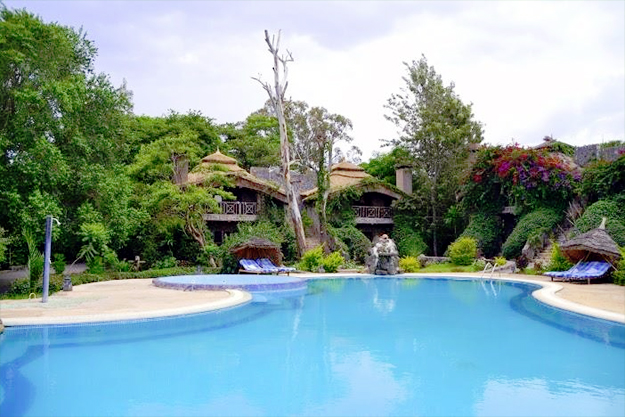
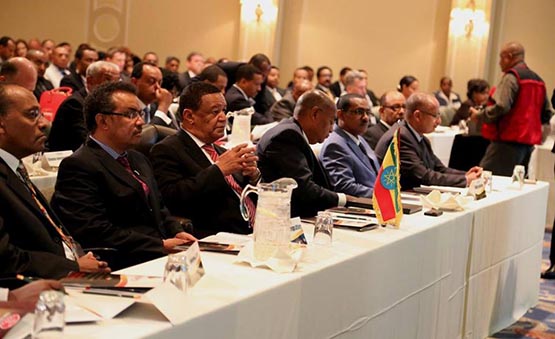
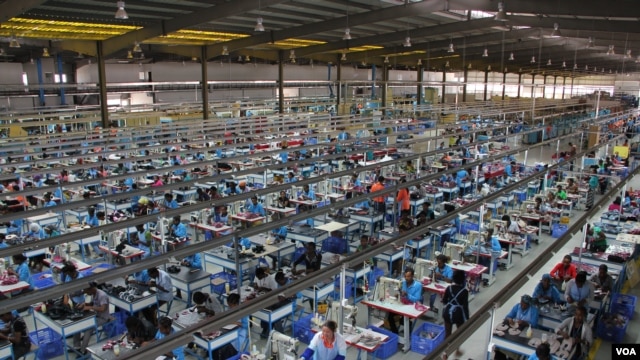



 The Ethiopia Horticulture Development Agency said 245 million USD was earned from export of flowers, vegetables and fruits during the just-ended Ethiopia fiscal year.
The Ethiopia Horticulture Development Agency said 245 million USD was earned from export of flowers, vegetables and fruits during the just-ended Ethiopia fiscal year.
 The United Arab Emirates (UAE) based automotive company, Al Ghandin Auto Group, opened a representative office in Ethiopia’s capital, Addis Ababa, for the purpose of serving the East African market. The company intends to go fully operational by the coming October.
The United Arab Emirates (UAE) based automotive company, Al Ghandin Auto Group, opened a representative office in Ethiopia’s capital, Addis Ababa, for the purpose of serving the East African market. The company intends to go fully operational by the coming October.





 &lt;img src=’
&lt;img src=’












 http://www.whitehouse.gov/photos-and-video/photogallery/us-africa-leaders-summit” width=”621″ height=”350″ />
http://www.whitehouse.gov/photos-and-video/photogallery/us-africa-leaders-summit” width=”621″ height=”350″ />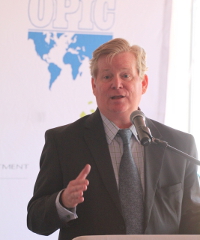








 Ethiopia and Belgium should strengthen their economic relation by using the strong diplomatic tie they have developed, Belgium’s Ambassador to Ethiopia said.
Ethiopia and Belgium should strengthen their economic relation by using the strong diplomatic tie they have developed, Belgium’s Ambassador to Ethiopia said.








